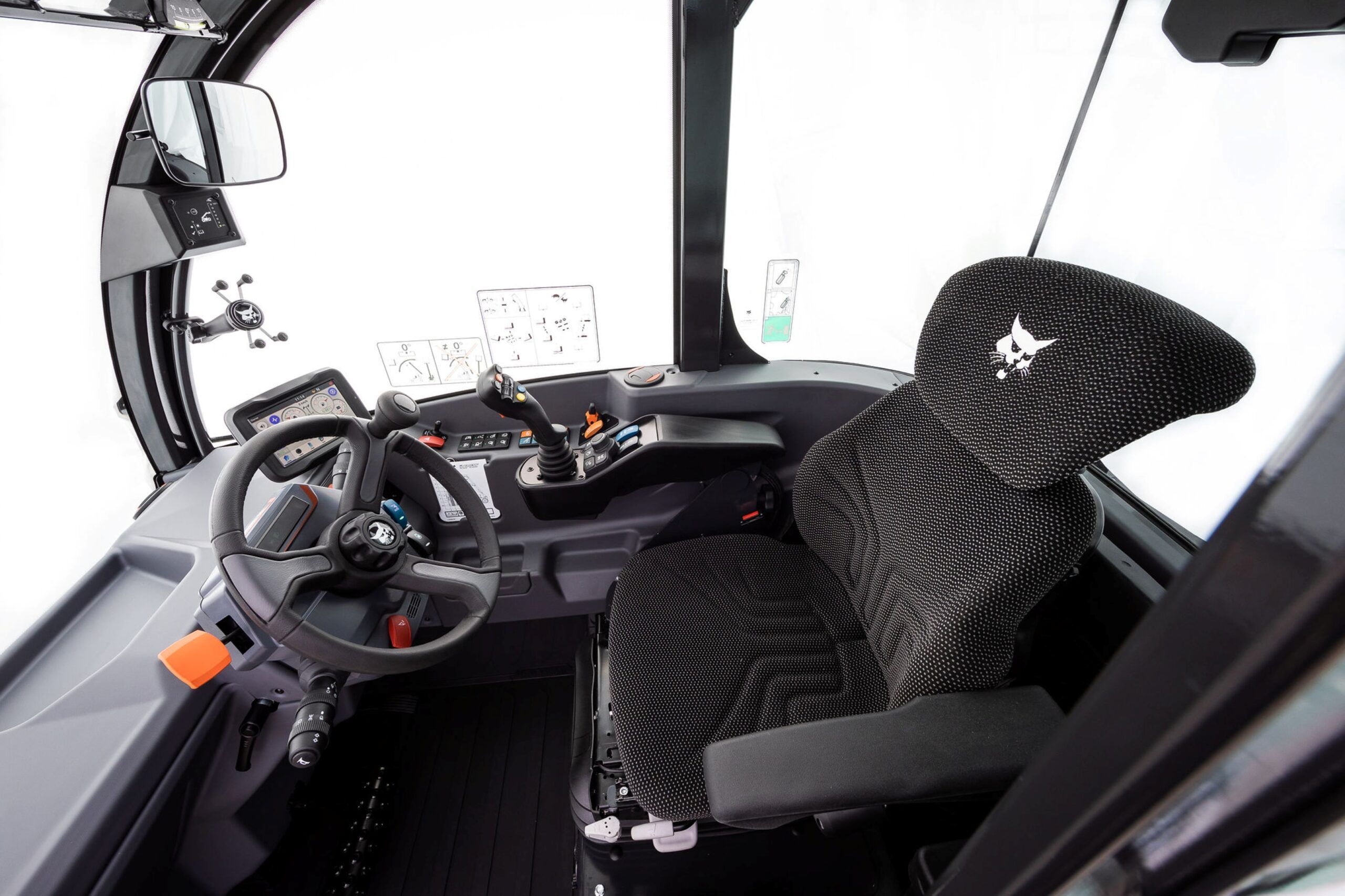New agricultural telehandlers from Bobcat ship steady V-Drive transmission alongside sensible options for smoother operation and elevated productiveness
When Bobcat telehandler prospects demanded machines that had increased productiveness with a steady transmission, its engineers set to work. The mixed effort resulted within the launch of three new telehandlers, the TL34.65HF V-Drive (3.4t/6.3m), TL38.70HF V-Drive (3.8t/7.0m) and TL43.80HF V-Drive (4.3t/7.5m), designed for the evolving agricultural market utilizing its new V-Drive know-how.
V-Drive transmission
The sensible capabilities on the brand new V-Drive fashions present an excellent resolution for patrons requiring a high-performance various for his or her purposes. “The Bobcat V-Drive telehandlers have been launched as an addition to the prevailing vary,” says Florian Hilbert, Bobcat telescopics product supervisor for EMEA. “This was to satisfy a request from a few of our prospects to supply extra consolation and productiveness. Our prospects now have the likelihood to decide on between the gearbox transmission or the brand new V-Drive steady transmission. We began the manufacturing of those new telehandlers in April, and now we have already delivered the primary items to prospects.”
Prospects choosing the V-Drive transmission won’t lose any efficiency in comparison with the present gearbox transmission because of the usage of hydraulic motors in sequence. The hydraulic tank has additionally been redesigned leading to a better capability of 70 litres as a substitute of 59 litres within the present transmission.

In contrast to to the present transmission, the V-Drive permits the operator to drive from 0 to 40km/h with out the necessity to cease the machine or take into consideration altering gear earlier than beginning. Consequently, the simplicity and effectivity of the V-Drive transmission gives improved consolation and operation. It additionally removes any jolts that may occur when shifting from one velocity vary to a different. “A key side of the brand new V-Drive telehandlers is the continual transmission itself in fact, however there are a number of different necessary options to notice,” says Hilbert. “We considerably lowered the noise, and now we have developed some sensible capabilities accessible as customary corresponding to Cruise Management, Eco-Experience, which is engine RPM optimisation, and Cease and Begin options.”
Within the new V-Drive fashions, the Turtle and Rabbit hydrostatic velocity ranges are nonetheless accessible and are at all times selectable by way of the joystick. Each hydraulic velocity ranges have been optimised with particular curves in keeping with the necessities of the applying. The Turtle velocity represents the machine in loader mode, with speeds from 0 to 20kph, and the Rabbit velocity is the driving mode, accelerating from 0 to 40kph.
“We have now developed this new transmission to satisfy further necessities requested by a number of end-customers. This resolution is bringing extra consolation, extra security, extra peace of thoughts for patrons and reduces their whole price of possession,” says Hillbert.
One other good thing about the V-Drive transmission is its improved traction, offering a smoother, quieter and extra seamless experience, free from jerks even when hauling fully-loaded trailers. It may well adapt to any terrain with good grip and stability even when the operator is tackling tough floor or slippery surfaces. When growing the brand new V-Drive telehandlers, Bobcat collaborated with a number of producers to make sure environment friendly operation, as Hillbert says. “The engine is manufactured by HDI (Hyundai) particularly for Bobcat. For the transmission, we carefully cooperated with Linde for these V-Drive fashions. Transferring to the wheel hubs, these are provided by Dana, the cabin by Buisard and we’re working with Pilot & Grammer for the seat. Alliance is the producer of the usual tyres, however we additionally supply completely different choices corresponding to Michelin XMCL. We provide 460-24 as customary and may go to 500- 24 sizes. Subsequently, all-in-all, we’re utilizing solely the highest, most dependable and very talked-about suppliers for the parts of the V-Drive machines.”

Operator consolation is essential
Following work with exterior acoustic specialists to cut back the noise inside and out of doors the cab, the brand new V-Drive fashions are considerably quieter when in use. To attain this, Bobcat made main adjustments, for instance the hydraulic motor has been suspended with 4 rubber mounts leading to a lower of 60% in vibrations, and the whistle sound of the transmission has been totally eradicated. Coupled with sensible capabilities like Cruise Management or Eco-Experience, operator consolation is perfect. Highlighting further in-cab options, Hillbert notes: “There are quite a few advantages, however we are able to point out the hand throttle, 7in touchscreen show with built-in radio and Bluetooth performance, and a normal/dynamic transmission mode amongst others. All are provided as customary on the V-Drive fashions.”
Taking up the problem
Designing any new telehandler presents its personal set of challenges by way of giving prospects extra bang for his or her buck, however Hillbert says it has completed this within the new V-Drive machines. “The primary motive for the design was as a solution to voice of buyer (VOC) requests. Listening to farmers utilizing telehandlers is essential and a part of our DNA at Bobcat to make such developments a actuality. And this VOC clearly highlighted consolation and productiveness. Our foremost problem was to maintain the identical efficiency now we have with our gearbox transmission, and we’re happy with what now we have completed as a result of the efficiency of the V-Drive fashions is even higher. Operators are on the centre of our developments and so we designed these new V-Drive fashions to supply extra consolation and productiveness whereas considerably bettering the operator’s peace of thoughts and lowering the whole price of possession.”
This text first appeared within the June subject of iVT


